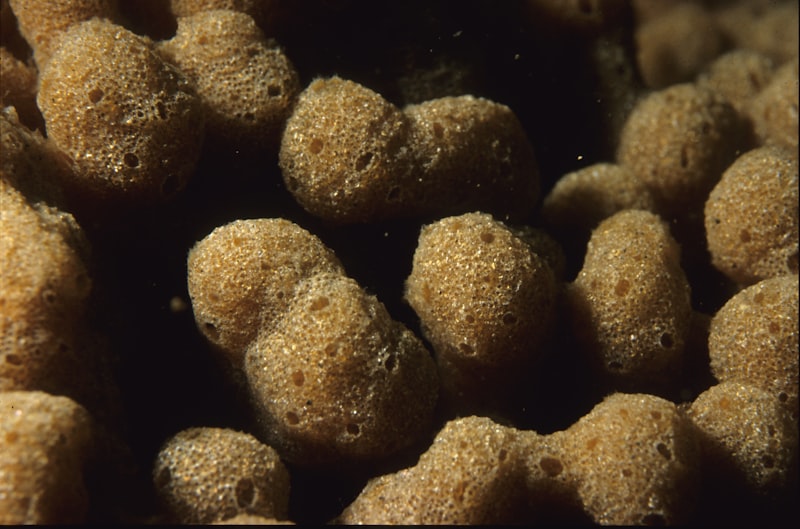
Coral reefs, often called the “rainforests of the sea,” face a myriad of threats in our rapidly changing world. Climate change, with its rising sea temperatures and ocean acidification, poses perhaps the gravest danger. These environmental shifts stress coral polyps, the tiny organisms that build reefs, leading to coral bleaching—a stark phenomenon where corals expel the symbiotic algae living in their tissues, causing them to turn bone-white and vulnerable.
But amid these challenges, scientists and conservationists are pioneering remarkable innovations to safeguard coral reefs. From advanced coral farming techniques that cultivate resilient coral species in controlled environments to artificial intelligence-driven monitoring systems that track reef health in real-time, technology is playing a pivotal role in coral reef conservation. These innovations not only aim to restore damaged reefs but also to predict and mitigate future threats more effectively.
Imagine a world where coral reefs thrive, where their resilience matches the awe they inspire. This future hinges not only on technological advancements but also on global cooperation and sustainable practices. Each of us holds a stake in this narrative—whether through supporting eco-friendly policies, reducing carbon footprints, or championing marine conservation efforts.
As we gaze into the future of coral reefs, let us envision a tapestry where innovation and stewardship intertwine, where the marvels of nature continue to enchant generations to come. The journey ahead may be challenging, but with determination and innovation, we can ensure that coral reefs remain vibrant havens of biodiversity and wonder for centuries onward.
Undersea Innovation: How Technology Is Saving Coral Reefs
One of the groundbreaking innovations making waves in marine conservation is the use of 3D printing technology to restore coral reefs. Imagine underwater gardens blooming from intricately designed structures, tailored to mimic the natural habitats that corals thrive in. These artificial reefs not only provide a substrate for coral attachment but also encourage the growth of new colonies, revitalizing damaged areas of the reef.
Furthermore, drones equipped with advanced sensors are revolutionizing reef monitoring and conservation efforts. These aerial marvels glide over the ocean’s surface, capturing high-resolution images and data that were once impossible to obtain. Scientists can now monitor coral health, detect early signs of bleaching, and assess environmental changes in real-time, allowing for swift intervention strategies.
In the fight against coral bleaching, researchers are harnessing the power of genetic technology. By studying resilient coral species that withstand environmental stressors, scientists are unlocking the secrets encoded in their DNA. This knowledge paves the way for breeding programs aimed at creating super corals capable of surviving warmer and more acidic oceans.
Moreover, virtual reality (VR) is not just for gaming but is now a vital tool in marine education and awareness. Through immersive experiences, people can explore coral reefs up close, gaining a deeper understanding of their beauty and fragility. This empathy-driven approach is crucial for inspiring global action and fostering a sense of responsibility towards ocean conservation.
As technology continues to evolve, so too does our ability to protect and preserve coral reefs. From 3D-printed reefs to drone surveillance and genetic research, these innovations offer a glimmer of hope for the future of our oceans’ most precious ecosystems. Together, we can ensure that coral reefs thrive for generations to come.
Rising Seas, Sinking Reefs: Climate Change Threatens Coral Ecosystems
Why does this matter? Coral reefs are not just breathtakingly beautiful; they are vital to marine biodiversity. They provide habitat and shelter for countless marine species, supporting about a quarter of all ocean life despite covering less than 0.1% of the ocean floor. Imagine a bustling underwater city, complete with homes, grocery stores, and schools, suddenly under threat of collapse. That’s what coral reefs face today.
As carbon dioxide levels rise in the atmosphere, oceans absorb much of this excess CO2, leading to ocean acidification. This change in the ocean’s chemistry makes it harder for corals to build their calcium carbonate skeletons, essential for their structure and growth. Like a house slowly dissolving due to acid rain, coral reefs weaken and become more susceptible to damage from storms and other environmental pressures.

But it’s not just warmer waters and acidic seas that corals contend with. Rising sea levels due to melting ice caps and glaciers mean that coral reefs, often close to the surface for sunlight, may find themselves submerged and unable to survive. It’s akin to slowly flooding a garden: plants that thrive in sunlight suffocate underwater.
In response to these threats, scientists and conservationists are working tirelessly to understand and protect coral reefs. From deploying artificial reefs to breeding resilient coral species in labs, efforts are underway worldwide to give these underwater marvels a fighting chance against the onslaught of climate change.
Understanding the plight of coral reefs isn’t just about preserving beauty beneath the waves; it’s about safeguarding an ecosystem that supports millions of livelihoods and sustains our planet’s delicate balance. As we navigate the challenges of a warming world, the fate of coral reefs serves as a poignant reminder of our interconnectedness with the natural world and the urgent need for global action to combat climate change.
Bleached Beyond Recognition: The Fight to Restore Coral Vitality
Imagine a once-thriving underwater city, its bustling alleys now eerily deserted. Coral bleaching isn’t just a cosmetic issue; it’s a dire warning sign of ecosystem distress. When corals bleach, they expel the algae living in their tissues, which provide them with both color and sustenance. Without these algae, corals become vulnerable to disease and starvation, leading to widespread mortality among these sensitive organisms.
But amidst this bleak landscape, a ray of hope emerges: restoration efforts. Scientists and conservationists are mobilizing to reverse the damage inflicted upon our coral reefs. Through innovative techniques like coral gardening and assisted evolution, they aim to bolster resilience in these fragile ecosystems. Picture it as a delicate dance of science and nature, where tiny fragments of coral are nurtured in nurseries before being transplanted back into their ocean homes.
It’s a race against time as researchers explore novel ways to enhance coral resistance to warming seas and pollution. Like doctors treating a patient, they’re developing new “medicines” for corals—genetic interventions and probiotics—to fortify their defenses against environmental stressors. These efforts aren’t just about saving coral reefs; they’re about safeguarding the myriad species that depend on these reefs for survival.
The fight to restore coral vitality isn’t just a scientific endeavor; it’s a testament to human ingenuity and our deep-seated connection to the natural world. As we navigate the complexities of climate change and biodiversity loss, each coral restored is a beacon of resilience—a symbol that we can heal what we’ve harmed.
In this ongoing battle beneath the waves, every coral matters. Each restoration project, each scientific breakthrough brings us closer to a future where coral reefs thrive once more, teeming with life and color—a testament to our shared commitment to preserving the wonders of our oceans.
Guardians of the Reef: Community-Led Conservation Efforts Surge
These community-led conservation efforts are not mere initiatives but heartfelt commitments etched into daily life. Imagine villagers gathering at dawn, not just for their catch but to meticulously clean debris that threatens delicate coral homes. Their efforts ripple outward, uniting generations in a shared vision of safeguarding these underwater marvels.
Every action speaks of a profound understanding: that the health of the reef mirrors the vitality of their own community. Through education and grassroots initiatives, they empower each other to embrace sustainable practices. It’s a symphony where every individual, from the seasoned elder to the youngest child, plays a crucial part.
Their journey isn’t without challenges. Like a fragile ecosystem itself, they face threats—pollution, climate change, and overfishing—that loom like shadows over the reef’s vibrant colors. Yet, these challenges fuel their determination rather than diminish it. They adapt, innovate, and forge partnerships beyond their shores to strengthen their cause.
In this narrative, the reef emerges not only as a natural wonder but as a testament to human potential. It’s a canvas where resilience and hope are painted stroke by stroke, where each gesture, no matter how small, resonates like a beacon in the underwater twilight.
Frequently Asked Questions
What innovative solutions are being explored to protect coral reefs?
Discover innovative solutions being explored to protect coral reefs, focusing on advancements in coral restoration techniques, development of reef-safe sunscreens, and sustainable coastal development practices.
What are the main threats facing coral reefs today?
Learn about the main threats facing coral reefs today, including climate change, ocean acidification, overfishing, pollution, and coral bleaching. Understand how these factors impact reef ecosystems and what can be done to mitigate these threats.
How can climate change impact coral reef ecosystems?
Learn about how climate change affects coral reef ecosystems, including coral bleaching, ocean acidification, and habitat loss. Understand the direct and indirect impacts on marine biodiversity and the steps being taken to mitigate these effects.
What can individuals do to help conserve coral reefs?
Learn how individuals can contribute to coral reef conservation efforts through simple actions such as reducing carbon footprint, using reef-safe sunscreen, supporting sustainable seafood practices, and participating in local reef clean-up initiatives.
Why are coral reefs important for marine biodiversity?
Discover why coral reefs are crucial for marine biodiversity. Learn about their role in supporting diverse ecosystems, protecting coastlines, and providing habitats for countless marine species. Explore how preserving coral reefs is essential for the health of our oceans and the sustainability of marine life.


